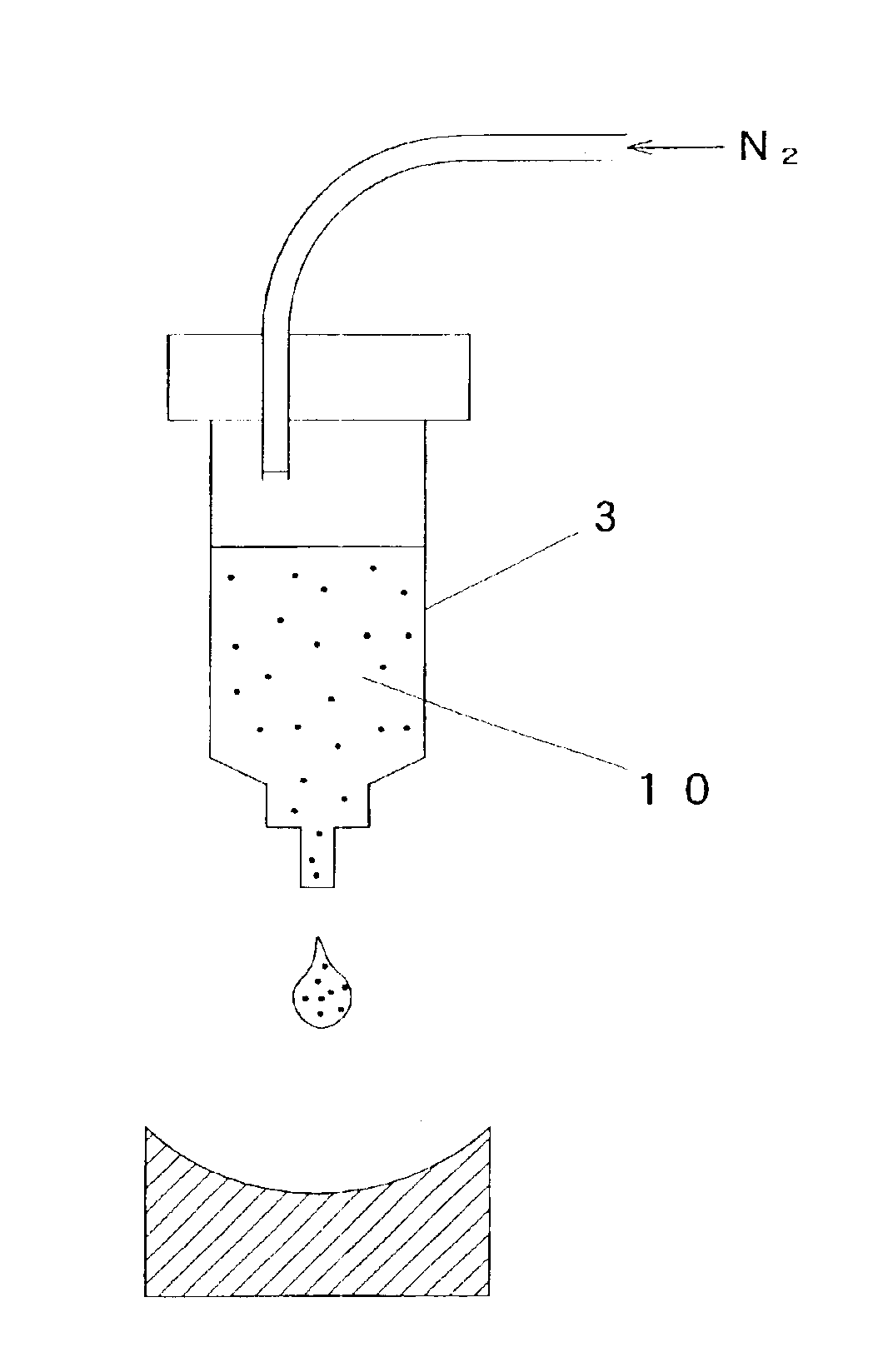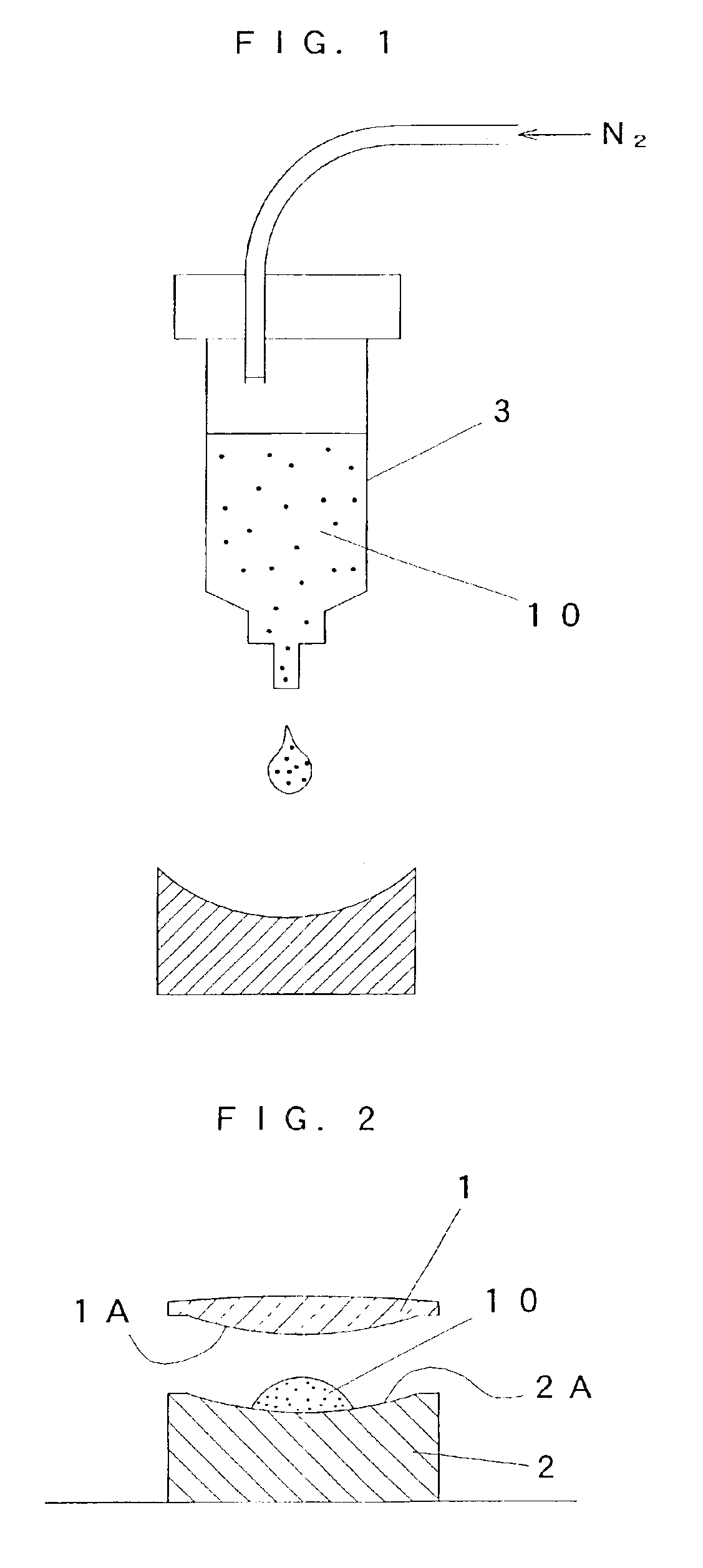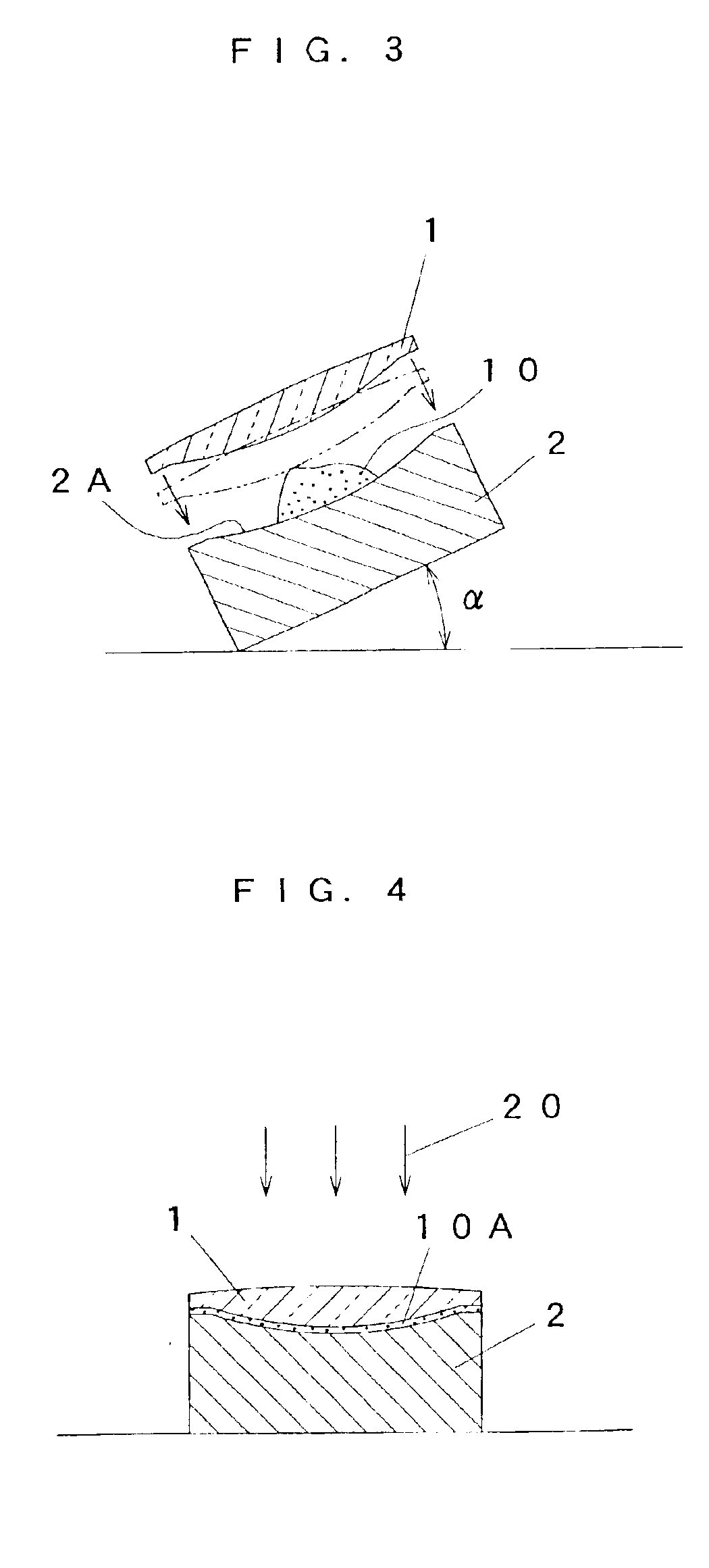Manufacturing method of compound aspheric lens
a technology of compound aspheric lens and manufacturing method, which is applied in the field of manufacturing compound aspheric lens, can solve the problems of low efficiency percentage, achieve the effects of reducing deactivation and deterioration, enhancing efficiency percentage, and reducing the number of lenses
- Summary
- Abstract
- Description
- Claims
- Application Information
AI Technical Summary
Benefits of technology
Problems solved by technology
Method used
Image
Examples
embodiment 1
In Embodiment 1 and Comparative Example 1, a composite aspheric face was produced by using as the convex lens to constitute the base of the aspheric lens a glass lens of 200 μm in central thickness, φ57 mm in outside diameter and R99 in radius of curvature (see FIG. 2), while in Embodiment 2 and Comparative Example 2, a composite aspheric face was produced by using as the concave lens to constitute the base of the aspheric lens a glass lens of 150 μm in central thickness, φ51 mm in outside diameter and R37 in radius of curvature (see FIG. 5). In any of the embodiments and the comparative examples, the compound aspheric lens was produced without allowing bubbles (air bubbles) to enter the molded resin layer 10A.
Thus in producing a compound aspheric lens having the convex lens 1 as its base (Embodiment 1 and Comparative Example 1), as in the embodiment of the invention shown in FIG. 2 through FIG. 4, the resin fluid 10 let stay on the aspheric face 2A of the concave metallic mold 2 an...
PUM
| Property | Measurement | Unit |
|---|---|---|
| angle of inclination | aaaaa | aaaaa |
| thickness | aaaaa | aaaaa |
| thickness | aaaaa | aaaaa |
Abstract
Description
Claims
Application Information
 Login to View More
Login to View More - R&D
- Intellectual Property
- Life Sciences
- Materials
- Tech Scout
- Unparalleled Data Quality
- Higher Quality Content
- 60% Fewer Hallucinations
Browse by: Latest US Patents, China's latest patents, Technical Efficacy Thesaurus, Application Domain, Technology Topic, Popular Technical Reports.
© 2025 PatSnap. All rights reserved.Legal|Privacy policy|Modern Slavery Act Transparency Statement|Sitemap|About US| Contact US: help@patsnap.com



